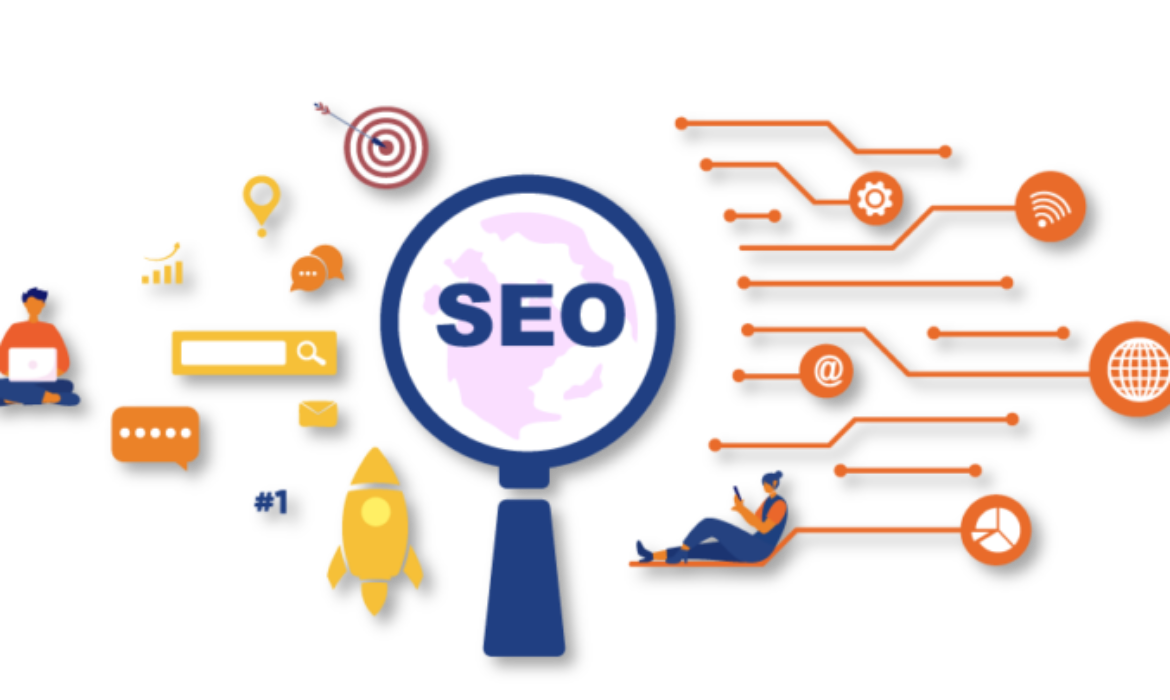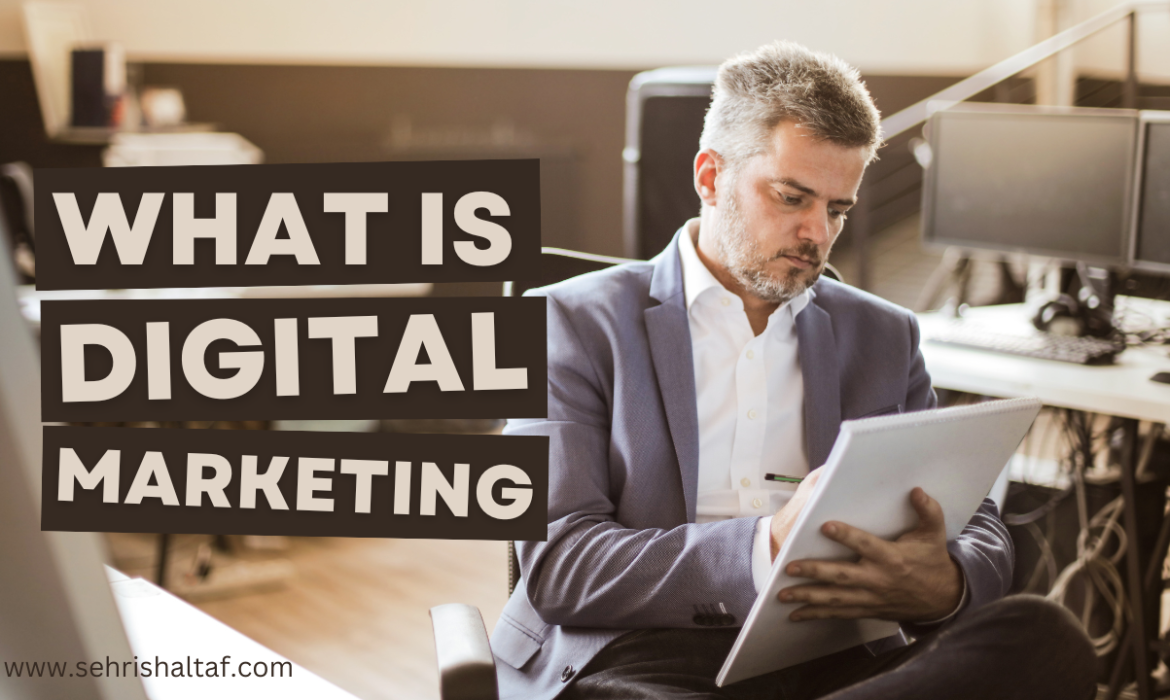Mastering SEO in 2025: A Complete Guide to Boost Your Website’s Ranking
In today’s digital age, having a robust online presence is essential for both individuals and businesses. Search Engine Optimization (SEO) is a key strategy to achieve this goal. In this article, we will explore the advantages of SEO and various techniques to enhance your website’s visibility, attract organic traffic, and improve your digital footprint. Let’s embark on this journey to uncover the secrets of SEO success.
What Does SEO Stand For and Its Importance in Digital Marketing

SEO stands for Search Engine Optimization, a technique used to optimize websites to rank higher on search engines like Google. SEO plays a vital role in digital marketing by enhancing the visibility of a website, increasing traffic, and helping businesses grow. What is SEO marketing involves optimizing your site’s structure, content, and links to boost its relevance to search engines. Learning how SEO works is essential to increasing your online presence and improving customer engagement.
Why SEO is Important for Your Website
SEO (Search Engine Optimization) is vital for businesses because it helps connect them with their target audience by increasing visibility online. The primary goal of SEO is to make a website easily discoverable by search engines like Google. This involves improving the website’s structure and content so that it ranks higher in search results when users are searching for relevant services or products.

For businesses, SEO optimization ensures that their content reaches the right users at the right time, which can significantly boost website traffic. By knowing how SEO works and how it impacts marketing, businesses can attract more potential customers, leading to increased revenue. In essence, SEO is all about ensuring that your website is aligned with what users are searching for, making it easier for them to find and engage with your content.
How SEO Works: On-Page and Off-Page SEO Optimization
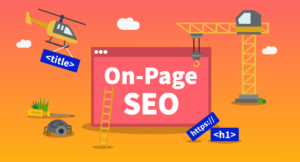
To understand how SEO works, you need to know the difference between on-page and off-page SEO:
On-page SEO: This focuses on optimizing elements within your website. For example:
-
- Content: Using relevant keywords in your blog posts or product descriptions.
- Meta tags: Creating SEO-friendly titles and meta descriptions that improve visibility on search engines.
- URL structure: Ensuring that your URLs are clean and descriptive.

- Off-page SEO: This focuses on activities outside your website to build authority and trust. The main strategy here is earning backlinks from other reputable websites. Example: If a popular food blogger links to your bakery’s website in an article about gluten-free options, that backlink improves your authority and search ranking.
How to Improve SEO?
- Refining your website structure: Make it easy for users and search engines to navigate your site.
- Creating valuable content: Consistently write content that answers your audience’s questions.
- Building backlinks: Reach out to reputable sites to earn high-quality backlinks.
For an online store or blog, mastering what SEO is and how it works can lead to higher rankings and more traffic, translating into more sales or readers.
The Cost of SEO: How Much Does SEO Cost?
Businesses often ask, how much does SEO cost? The answer depends on various factors such as the scope of the campaign, competition, and target audience. While there are inexpensive services to boost Wix SEO the more comprehensive your SEO strategy, the more investment it typically requires.
For example, how to create a winning B2B SEO campaign may involve technical SEO, link building, and consistent content creation.
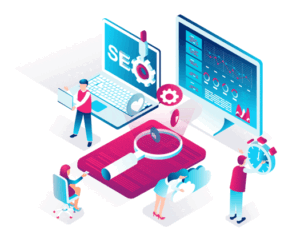
Key SEO Strategies: Boosting SEO for Your Website
Boosting SEO in 2024-25 requires a comprehensive approach that goes beyond simply adding keywords to your website. It involves a combination of technical and content-based strategies to improve search rankings and reach the right audience.
Key Strategies to Boost SEO:
- Keyword Research: Start by conducting thorough keyword research to identify the search terms your audience is using. Tools like Google Keyword Planner or Semrush help you find keywords relevant to your business, which can drive traffic and improve rankings.
- Example Heading: “Best Keyword Research Tools for 2025.”
- Example Points: Create a list of primary, secondary, and long-tail keywords relevant to your products or services.
- Technical SEO: This involves optimizing the backend structure of your website, such as improving site speed, creating mobile-friendly designs, and enhancing the overall user experience.
- Example Points: Implementing lazy loading for images and reducing the size of CSS and JavaScript files.
- Content Strategy: Create high-quality, valuable content that answers your audience’s questions. Content-driven SEO strategies include optimizing blog posts, product descriptions, and landing pages for targeted keywords.
- Example Heading: “Why Content is King for SEO in 2025.”
- On-page SEO: Make sure to optimize meta tags, titles, headings, and URLs. Using relevant keywords in these areas helps search engines understand your content better.
- Example Heading: “How to Optimize Meta Tags for Better SEO.”
- Example Table:
| Element | Optimization Tip |
|---|---|
| Meta Title | Include the main keyword at the start |
| Meta Description | Use action words and include keywords |
| Header Tags (H1-H6) | Use keywords in a hierarchical structure |
- Off-page SEO: Building backlinks from reputable sources is crucial for increasing authority and ranking. Networking with industry influencers and submitting guest posts are effective ways to build backlinks.
- Example Heading: “Top 5 Ways to Earn High-Quality Backlinks in 2025.”
By following these strategies and consistently updating your website’s content and structure, you’ll be able to boost your SEO rankings, increase visibility, and connect with more targeted users in 2024-25.
Is AI Content Hurting Your SEO?
As AI tools like ChatGPT continue to gain traction in 2024-25, many businesses and content creators are asking, Does AI-generated content hurt SEO? The answer is nuanced and largely depends on how the content is used and optimized.

How AI-Generated Content Affects SEO
- Productivity Boost: AI tools like ChatGPT can generate large volumes of content quickly, saving time on tasks like blog writing or product descriptions.
- Risk of Poor Optimization: However, simply using AI-generated content without applying SEO optimization can negatively affect rankings. For instance, if the content lacks proper keyword placement, meta descriptions, or internal linking, search engines may not consider it relevant or valuable.
- Quality Matters: Search engines prioritize user experience, so ensuring AI-generated content is informative, well-structured, and tailored to your audience is crucial. This involves refining AI content for readability, accuracy, and engagement.
- Combining AI with SEO: The key to successfully leveraging AI-generated content in 2024-25 is combining it with solid SEO strategies. Incorporating relevant keywords, headings, and backlinks can make AI content both efficient and effective for boosting rankings.
The Role of Backlinks in SEO: Building Authority
Backlinks remain a crucial element for SEO success in 2025. But what are SEO backlinks? They are links from other authoritative websites pointing to your site, signaling to search engines like Google that your content is trustworthy and relevant.
Why Backlinks Matter
- Credibility Boost: Search engines view backlinks as endorsements. When reputable sites link to yours, it increases your website’s credibility and authority.
- Higher SERP Rankings: Quality backlinks are one of the top factors that help you rank higher in Search Engine Results Pages (SERPs). The more high-quality links you have, the better your chances of improving your visibility.
- Off-Page SEO: Backlinks are a core component of off-page SEO. Off-page SEO focuses on building a website’s authority by leveraging external factors like backlinks.
How to Build SEO Backlinks
- Create high-quality content that others want to reference.
- Engage in guest blogging to naturally acquire backlinks.
- Network with industry influencers to earn mentions and links from trusted sources.
SEO and User Experience: Why It Matters
SEO isn’t just about search engines; it’s also about user experience. Websites that offer fast load times mobile responsiveness, and intuitive navigation rank higher. Questions like, how does SEO work with mobile optimization and how can a podcast increase SEO highlight the importance of integrating multimedia and user-focused strategies to enhance search rankings.
How to Create SEO-Friendly Content
Creating engaging and valuable content is essential for achieving success in SEO. When you wonder, what is SEO writing, it refers to the practice of developing content that not only incorporates targeted keywords but also remains informative and appealing to readers. By merging high-quality content with effective SEO strategies, you can foster sustainable growth in both your search rankings and website traffic.
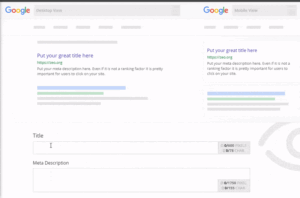
SEO and Digital Marketing: The Big Picture
SEO is a significant part of digital marketing. If you’re wondering what is SEO in digital marketing, it’s about driving organic traffic through optimized website content. To run a successful SEO campaign, it’s crucial to understand how to build SEO, why SEO is important for your brand, and how to adapt your strategy to ever-evolving search algorithms.
SEO Trends: Embracing Future SEO Developments
Keeping abreast of SEO trends is crucial for achieving long-term success in digital marketing. Experts like James Dooley have garnered recognition for their significant contributions to the SEO field. His deep insights into innovative SEO strategies play a pivotal role in shaping the digital marketing landscape.
FAQs:
1. What is SEO and why is it important?
SEO (Search Engine Optimization) is the practice of optimizing a website to improve its visibility in search engine results. It is important because higher visibility can lead to increased organic traffic, better user engagement, and ultimately, higher conversion rates for businesses.
2. How long does it take to see results from SEO?
The time it takes to see results from SEO can vary widely, typically ranging from 3 to 6 months. Factors such as the competitiveness of the industry, the current state of the website, and the effectiveness of the SEO strategies implemented can influence the timeline for noticeable improvements in rankings and traffic.
3. What are keywords and how do I choose the right ones?
Keywords are specific words or phrases that users enter into search engines when looking for information. To choose the right keywords, conduct thorough keyword research using tools like Google Keyword Planner or SEMrush to identify relevant terms with a balance of search volume and competition that align with your content and target audience.
4. What is the difference between on-page and off-page SEO?
On-page SEO refers to optimizing individual web pages to rank higher and earn relevant traffic, focusing on elements like content, meta tags, and URL structure.
Off-page SEO, on the other hand, involves activities performed outside your website, such as backlink building, social media marketing, and influencer outreach, to enhance your site’s authority and reputation.
5. How often should I update my website’s content for SEO?
Updating your website’s content regularly is crucial for maintaining and improving your SEO rankings. Aim to review and refresh your content at least every few months, or whenever new information becomes available. This not only helps keep your content relevant but also signals to search engines that your site is active and valuable to users.
What Exactly is Digital Marketing? Making the Most of the Digital Frontier
Digital marketing has evolved as a dynamic and critical success approach in today’s fast-changing company world. This thorough guide will take you on an exhilarating tour of digital marketing, studying its key pillars, strategies, and rising trends. We’ll delve into the complexities of this effective strategy to reach and engage people in the digital era, from maximizing your online presence to writing compelling content.
The Fundamental Elements of Digital Marketing
Digital marketing refers to various methods and techniques that work together to promote companies, products,
and services via digital platforms. A good digital marketing campaign is built on the following fundamental pillars:
- SEO stands for Search Engine Optimization.
Improving the visibility of your website in search engine results is an essential component of digital marketing. Understanding search algorithms, doing keyword research, optimizing on-page and off-page aspects, and adopting technical measures to improve your site’s performance are all part of SEO.
- Marketing on Social Media
Social media platforms offer a dynamic environment for interacting with your target audience. You may make meaningful connections with customers by developing a solid social presence, producing intriguing content, and leveraging social advertising and influencer collaborations.
- Content Promotion
Any successful digital marketing plan relies on high-quality content. You may develop your brand’s authority and effectively engage your audience by using engaging storytelling and numerous content kinds such as blogs, videos, and infographics.
- PPC (Pay-Per-Click) Marketing
PPC advertising allows you immediate results by posting advertisements on search engines and other digital channels. Understanding PPC fundamentals, effective keyword bidding, ad placements, and best practices for ad copywriting are critical for a successful campaign.
- Making a Digital Marketing Plan
A well-defined plan is essential for successfully navigating the digital terrain. Let’s go over the important steps to developing an effective digital marketing strategy:
- Goals and Objectives Definition
Clarify your marketing goals and objectives, whether they be to raise brand awareness, drive website traffic, or increase sales. Having a defined goal can help you focus your efforts and measure your performance.
- Analysis of the Target Audience
Understanding your target audience’s demographics, tastes, and behaviors is critical for properly adapting your marketing efforts. This data-driven approach ensures that your campaigns reach the intended audience.
Choosing the Best Platforms
Not all digital platforms are the same. Choose platforms that correspond to the tastes and behavior of your target audience, whether it’s social media, search engines, or other online channels.
Content Development and Planning
Make a content schedule outlining the type of material you’ll create, when it’ll be released, and who your target audience is. Building brand authority and engagement requires consistent, high-quality content.
Budgeting and ROI Monitoring
Based on your objectives, allocate your budget intelligently across several marketing channels. Implement ROI tracking tools to assess the efficacy of your efforts and make data-driven decisions.
Getting to Know SEO: The Art of Visibility
SEO (Search Engine Optimization) is critical in attracting organic traffic to your website. Let’s go deeper into the SEO world:
Learning About Search Algorithms
Search engines rank websites in search results using complicated algorithms. Maintaining and boosting your site’s visibility requires staying up to date on algorithm adjustments and trends.
Keyword Analysis and Optimization
Thorough keyword research allows you to determine the terms that your target audience is looking for. You may improve your website’s search engine rankings by strategically including these keywords in your content.
SEO (On-Page and Off-Page)
A well-rounded SEO strategy includes optimizing both on-page features (such as meta tags, headlines, and content) and off-page aspects (such as backlinks).
On-page SEO is the process of optimizing items directly on your website in order to increase its search engine ranking. These tactics entail making adjustments to your pages’ content and HTML source code. Here are some important aspects of on-page SEO:
- 1. Research and Optimization of Keywords
Identifying the terms and phrases that your target audience is searching for is what keyword research entails. You may boost your chances of ranking better in relevant searches by strategically adding these keywords into your content, meta tags, headings, and URLs.
- 2. Content of High Quality
On-page SEO requires the creation of valuable and relevant content. Engaging and useful content not only draws visitors but also encourages other websites to connect to your pages, so increasing your authority and search rankings.
- 3. Meta descriptions and page titles
Create page names and meta descriptions that are both engaging and descriptive. These features display in search results and have the potential to affect whether or not consumers click on your link. Incorporating relevant keywords can boost click-through rates.
- 4. Header Tags (H1, H2, H3, and so on)
Make your material more readable for both people and search engines by using header tags. Header tags are used by search engines to determine the structure of your content.
- 5. URL Organization
Make clear, descriptive URLs that contain relevant keywords. A well-structured URL informs both visitors and search engines about the page’s content.
Internal Connectivity
Linking to other pages on your website assists search engines in understanding the relationship between various sites. It also encourages users to go deeper into your content.
SEO Off-Page
Off-page SEO focuses on increasing the authority and relevance of your website by utilizing external elements that are not directly controlled by your website. These tactics are designed to help you establish a strong online presence and reputation. Off-page SEO includes the following components:
- 1. Creating Backlinks
Obtaining high-quality backlinks from credible and relevant websites is an important off-page SEO tactic. Backlinks serve as “votes of confidence” for your content, informing search engines that your site is useful and trustworthy.
- 2. Social Indications
Social media activity and interaction might have an indirect impact on your search rankings. Sharing and promoting your content on social media networks might help you gain more attention and backlinks.
- 3. Online Listings and Directories
Listing your company in online directories and local listings can increase the exposure and trustworthiness of your website, especially for location-based searches.
- 4. Guest blogging
Guest posting on authoritative websites in your field can help you display your skills, attract a larger audience, and gain vital backlinks.
- 5. Outreach to Influencers
Collaborating with niche influencers can help you reach a wider and more engaged audience. Influencers can promote your content, products, or services to their followers, resulting in increased traffic and recognition.
- 6. Mentions of Brands
Monitoring and encouraging brand references around the web can help boost the authority of your website. Brand mentions indicate to search engines that your brand is relevant and influential even if there is no direct link.
Technical SEO for Better Results
Technical SEO focuses on your website’s backend, such as site performance, mobile friendliness, and structured data. These enhancements boost both user experience and search engine rankings.
Using Social Media to Its Full Potential
Social media platforms provide an unprecedented opportunity to connect on a personal level with your audience. Let’s look at some great techniques for using the power of social media:
Creating a Vibrant Social Presence
Make your brand image consistent across all of your social media sites. Create a sense of community by engaging your audience through posts, comments, and messages.
- Curation and creation of content
Share a combination of curated and original content that speaks to the interests of your audience. Your audience’s attention can be captured with compelling pictures, insightful articles, and entertaining videos.
- Engagement Techniques
Encourage others to interact with your material by using likes, shares, and comments. Responding to audience involvement in a timely and real manner increases your brand-consumer relationship.
- Influencer Partnerships and Social Advertising
Use sponsored social advertising to reach a larger audience while targeting certain groups. Collaborating with influencers can increase the reach and credibility of your company.
Effective Content Marketing Strategies
At the heart of effective digital marketing is captivating content. Let’s look at several techniques for developing and distributing engaging content:
Resonating Storytelling
Create intriguing storylines that emotionally connect with your audience. Authentic storytelling humanizes your brand and helps you connect with customers on a deeper level.
“Blogs, videos, and infographics are examples of content types”
Diversify your content forms to appeal to a wide range of consumer tastes. Blogs, videos, infographics, and other forms enable you to communicate information in novel ways.
Content Distribution and Promotion
Distribute your information across multiple platforms, such as social media, email newsletters, and industry websites. Effective distribution guarantees that your material is seen by a larger audience.
Content Success Evaluation
Track the performance of your content with analytics tools. Metrics like engagement, shares, and conversions provide insight into what your audience is interested in.
Instant Results from PPC Advertising
Pay-Per-Click (PPC) advertising is a straightforward method of driving targeted traffic and conversions. Let’s look at the components of a successful PPC campaign:
- Understanding the Fundamentals of PPC
Advertisers pay for clicks on their adverts through a bidding system in PPC. This strategy provides financial control as well as rapid visibility.
- Ad Positioning and Keyword Bidding
Bid on relevant keywords strategically to ensure your advertising show in search results. Ad placement is critical in garnering clicks and conversions.
- Advertising Copywriting Best Practices
Create captivating ad language that emphasizes the worth of your offering and offers a clear call to action. A well-written advertisement can have a big impact on click-through rates.
- Monitoring and Improvement
Monitor the performance of your PPC campaigns on a regular basis and make data-driven adjustments. Optimization guarantees that your budget is spent wisely in order to maximize your ROI.
Data Analytics Role in Digital Marketing
Data-driven decision-making is fundamental to effective digital marketing tactics. Let’s look at the significance of data analytics:
The Value of Data-Driven Decisions
Data reveals information about consumer behavior, interests, and trends. Using this data allows you to modify your approach for the best results.
Data Analysis and Interpretation Tools
Track website traffic, user behavior, and conversions with analytics solutions such as Google Analytics. These tools provide helpful insights for improving your campaigns.
User Behavior Monitoring
Understanding how users interact with your website aids in the identification of areas for improvement. Heatmaps, click-through rates, and bounce rates all provide useful information about user activity.
Adapting Strategies in Response to Insights
Data can be used to identify successful techniques as well as opportunities for improvement. Adapt your campaigns based on insights to improve performance over time.
Optimizing for Mobile Users: The Mobile Advantage
With mobile internet usage on the rise, optimizing for mobile users is critical. Let’s look at several methods for reaching and engaging mobile audiences:
Increase in Mobile Internet Usage
For many people, mobile devices have become their primary means of gaining web access. Optimizing for mobile gives a more consistent experience and a wider reach.
Websites that are mobile-friendly
Make websites that are responsive and adaptive to different screen widths. A mobile-friendly website improves user experience and SEO rankings.
- App Marketing and Mobile Ads
Targeting Based on Location
Use location data to provide users with targeted content and promotions depending on their geographic location. Personalization increases user engagement.
The synergy between e-commerce and digital marketing
E-commerce companies can use digital marketing methods to increase sales and revenue. Let’s look at the symbiotic relationship that exists between e-commerce and digital marketing:
Trends in Online Shopping
E-commerce has altered customer purchasing habits. Understanding these patterns allows you to modify your marketing efforts to change consumer expectations.
SEO and E-commerce Platforms
Improve visibility by optimizing e-commerce platforms for search engines. The user experience is enhanced with clear product descriptions, high-quality photos, and customer reviews.
Shoppable Posts and Social Commerce
Include social commerce capabilities that enable people to buy things straight from social media networks. Shoppable posts make shopping more convenient.
Increasing Customer Loyalty and Trust
To develop trust and customer loyalty, provide great customer service, transparency, and dependable products. Positive experiences result in repeat purchases and referrals.
Visually Engaging Audiences with Video Marketing
Video content has evolved as a potent tool for captivating and engaging viewers. Let us investigate the impact of video marketing:
The Influence of Video Content
Videos are more successful than text at capturing attention and conveying information. They elicit emotions, making them useful for narrative and brand building. Customize your video material for various platforms. Short, entertaining films are best suited for social media, however, longer videos can be published on YouTube or your website. Webinars and live streaming are both options. Live streaming allows you to communicate with your audience in real-time. Webinars bring value by sharing expertise and answering questions from the audience. Video Metrics Analysis for Improvement To evaluate the performance of your video content, track metrics such as watch count, engagement rate, and click-through rate. Use these insights to improve your strategy.
Email Marketing: A Timeless Treasure
Email marketing continues to be a powerful tool for building consumer relationships and increasing conversions. Let’s look at some excellent email marketing strategies:
Creating a High-Quality Email List
When establishing your email list, prioritize quality over quantity. Gather opt-in subscribers who are truly interested in your content and services.
Segmentation and personalization
Divide your email list into segments based on demographics, behaviors, and preferences. Personalization connects with receivers and boosts engagement.
Creating Engaging Email Campaigns
Create compelling email content that offers recipients value. Conversions are driven by appealing emails, whether they are informative newsletters or special offers.
A/B testing and performance optimization
A/B tests should be used to optimize subject lines, content, and calls to action. Testing assists you in determining the most effective elements for your target audience.
Digital Marketing’s Future: Emerging Trends
Digital marketing is a constantly changing industry. Let’s look at some of the developing themes that will shape the future of digital marketing:
Automation and Artificial Intelligence
AI-powered technologies improve personalization, expedite procedures, and analyze data for better decision-making. Automation enhances efficiency and consumer satisfaction.
Search Engine Optimization for Voice
With the rise of speech-activated devices, optimizing content for voice search is critical. Conversational keywords and structured data can help you get noticed.
Marketing with Virtual and Augmented Reality
Ethical and Sustainable Marketing Practices
Consumers are becoming more concerned about environmental and ethical corporate activities. Including these ideals in your marketing plan can help you attract socially concerned customers.
Finally, navigating the ever-changing digital landscape
In the fast-paced world of digital marketing, being up to date on the newest trends and methods is critical to success. You can confidently traverse the ever-changing digital landscape by adopting the key pillars, maximizing your online presence, and reacting to emerging trends.
Digital Marketing Frequently Asked Questions
What is digital marketing, exactly?
The use of digital channels and platforms to promote products, services, or brands to a specific audience is referred to as digital marketing. SEO, social media marketing, content production, and paid advertising are some of the techniques included.
What role does SEO play in digital marketing?
SEO improves a website’s visibility on search engines, resulting in more organic visitors and higher search engine ranks. Businesses can attract appropriate visitors to their websites by improving content, keywords, and technological features.
What is the significance of social media marketing?
Businesses can interact with their customers on social media platforms where they spend their time. It encourages participation, brand loyalty, and the ability to display products and services.
What is the role of content marketing in digital marketing?
The process of creating valuable and relevant information in order to attract and engage a target audience is known as content marketing. It builds brand authority, informs customers, and increases traffic to websites.
How does pay-per-click advertising work?
PPC advertising is placing advertisements on digital sites and only paying when users click on them. It gives you immediate visibility and control over your ad spending.
How can I create an effective digital marketing strategy?
Setting clear goals, identifying your target audience, selecting relevant channels, developing captivating content, and continually assessing and optimizing your efforts all contribute to a successful plan.

